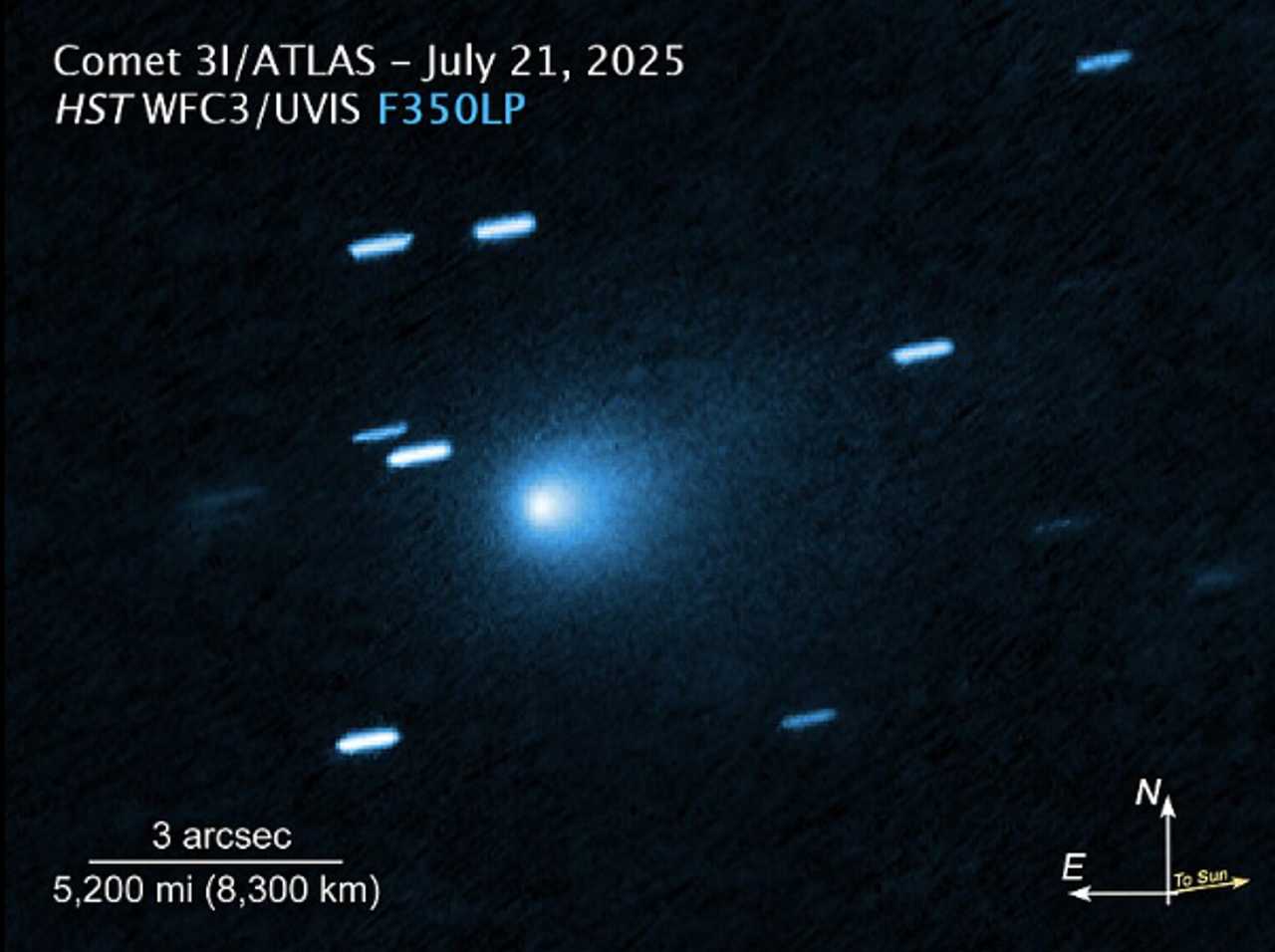
By Joe Lombardi From Daily Voice
A cosmic visitor is stirring up an earthly debate.
A Harvard University astrophysicist has suggested the incoming interstellar object 3I/ATLAS could be an alien probe. But NASA and most astronomers say it’s almost certainly a comet.
3I/ATLAS, also known as C/2025 N1, is an interstellar comet discovered by the Asteroid Terrestrial-impact Last Alert System station at Río Hurtado, Chile, on Tuesday, July 1.
3I/ATLAS is the third known interstellar object to pass through our solar system, meaning it originated beyond it.
The prevailing view classifies it as a comet: an icy body that brightens and can sprout a tail as solar heat releases gas and dust.
Scientists say its increasing brightness and slightly unusual path are consistent with natural “outgassing” and gravitational nudges from planets, not propulsion.
The minority view, led by Harvard Professor of Science Avi Loeb, argues that 3I/ATLAS warrants scrutiny because some aspects of its trajectory and reflectivity are atypical.
He and a handful of researchers contend that, in a low‑probability, high‑impact scenario, it could be a probe sent by another civilization.
Loeb noted that it "looks strange" and "has some glow in front of it and not behind it (the opposite of how comets are formed)," in an interview with CBS News.
Loeb, a bestselling author, says he recommends monitoring and getting as much more information as possible, and "we should be welcome to the idea we might be visited in the future."
31/ATLAS will make its closest approach to Earth on Friday, Dec. 19, 2025, at a distance of about 167 million miles,
Most experts find that leap unconvincing. They note there’s no evidence of communication signals, onboard power, or controlled maneuvering — hallmarks one would expect from a spacecraft.
Absent such signs, natural explanations remain far more likely.
Still, many scientists agree on one point: it’s worth a closer look.
Continued observations across optical and radio telescopes could further pin down the object’s composition, rotation, and outgassing.
If timelines and budgets allowed, a rapid‑response flyby mission could provide definitive answers, though that remains a long shot.
While the alien‑probe idea is intriguing, current evidence points to 3I/ATLAS being a natural comet.
Check back to Daily Voice for updates.

 Daily Voice
Daily Voice
 Nicki Swift
Nicki Swift AlterNet
AlterNet ABC30 Fresno Sports
ABC30 Fresno Sports NFL New Orleans Saints
NFL New Orleans Saints America News
America News Rolling Stone
Rolling Stone Raw Story
Raw Story 9&10 News
9&10 News